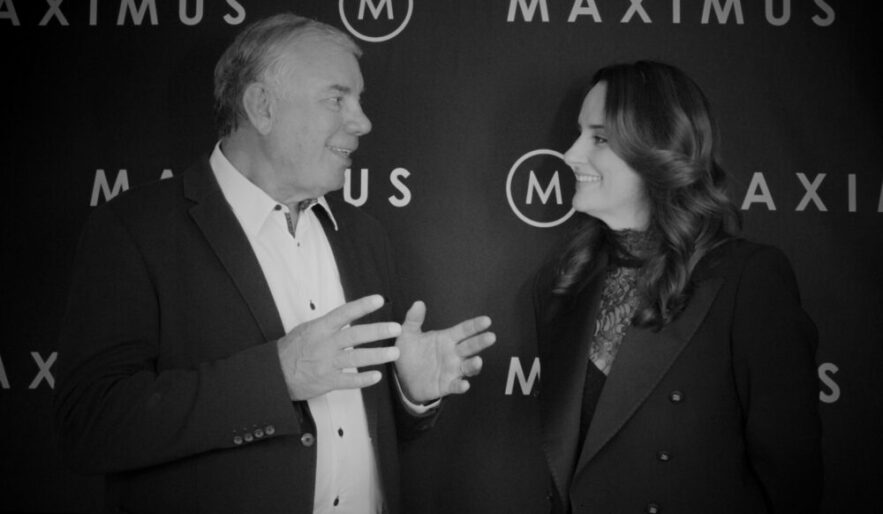The COVID-19 pandemic has reminded us that life is random, and that organisations must remain flexible – adaptable to economic shock, and curious towards the unexpected. Rigid monoliths, enshrined in old-fashioned leadership models had already shown signs of not only aging, but becoming extinct. In a post-COVID-19 world, striving for clarity – by mining data, measuring outcomes, testing new waters in the technology space, working through knowns and unknowns – is a deceptively simple and useful means for businesses to find pathways to relevance and success in any circumstance.
Here, two leaders, with different approaches, share how to seek clarity, empower informed decision making and produce value-driven, problem-solving innovations for the times to come.
Scott Bales
“Businesses that use data to tell them about their customers’ preferences and needs will thrive through COVID-19 because not only are they not leading with fear but they’re seeing that their customers still have needs and problems to be solved.”
– Scott Bales, Australian Technology and Strategy Advisor
Scott Bales is an Australian technology and strategy advisor and bestselling author. He moved to Asia in 2007, as Head of Technology for WING, a subsidiary of the ANZ Banking Group and has since held various roles, such as Head of Enterprise Business Development for Amazon Web Services, in the APAC region. Bales has been a mentor to many startups, built multimillion-dollar FinTech ventures and last year published Innovation Wars: Driving successful corporate innovation programs.
“The companies that are thriving now are those that were thriving pre-COVID. I’m an advocate of companies that develop objective measures for understanding, and then implementing the understanding and empathy they have for their customers.
A lot of companies that are less than 10 years old, would typically have that kind of DNA in their culture. I look at Netflix, Xero, Amazon Web Services (AWS), and Zoom; all these businesses are thriving under crisis because they use data to deeply and objectively understand their customers’ evolving needs, almost in real time.
They understand customer pain points, their behavioral preferences, their cultural preferences, their goals and what they value. It doesn’t matter if it’s a b2c business or a b2b business or whatever. Those that have objective means of being customer centric typically have better insight on either the creation of new products and services or the adaptation of current products and services.
Having the curiosity and the operational procedures to translate customer understanding into commercial opportunities is vital for thriving right now.
Last year AWS published a report on its penetration of the enterprise technology space. It showed that only around seven per cent of enterprise technology has been migrated to public cloud infrastructure. That’s a good reflection of where we are in the adoption cycle of these technologies.
Blockchain is a technology with the potential to automate auditing end-to-end. This will have a huge impact on the transparency of trade finance and supply chains. You might get to a point in the export of natural resources, for example, where we can ensure that the Environmental Social and Governance (ESG) goals of any business are measurable, transparent, objective and shown to operate across a company’s whole supply chain.
There’s also an interesting metric of self-awareness coming out of COVID-19, in the number of infographics or memes being produced that show the earth healing itself while we’re all grounded and keeping to our houses. That awareness is going to be vitally important for centering us back on our humanity, and that humanity will then come into our measures of success in the corporate world — so the motivation to use technology like blockchain to verify supply chains for ESG goals becomes a reality.
Pre COVID-19, the economy was moving at such a high velocity that many of us approached our daily work with some kind of transaction in mind. We’re in a period now, where those metrics are almost irrelevant. Companies that are thriving realise that if you look at the first phases of any sales and business development process, most of it relates to understanding the needs of customers.
My top advice to leaders right now, is that this is the time to train your empathy muscle. Schedule some time every day – with customers, with your ecosystem, with suppliers – to have a non-commercial-transaction-driven discussion with them around their pain and how they’re going in this situation. The more firsthand effort we invest in empathy right now, the better positioned we’ll be to clearly understand the situation and understand how to accelerate out of it.
Post-COVID, leaders need to move back to value-based innovation. My innovation background started in Cambodia in 2008, where WING was looking to secure simple financial transactions. We weren’t innovating for luxury or for convenience, we weren’t innovating for technological advancement. We were innovating out of necessity. Back then, let’s say an 18-year-old girl moved to the capital to work in a garment factory to stitch Gap jeans. The only way for her to send income back to her family in the provinces was literally to put cash in an envelope and trust a minibus driver to give it to the right person. A lot of the services that we built in Cambodia with WING, were to secure such transactions because these people were paying a high price for a very risky service.
Any innovation that comes out of necessity is typically more meaningful and more impactful. And that innovation should have an objective means to not only understand its purpose but also to measure its value contribution.
Which brings us back to technology. Now is the time for leaders to think about the top three things their business could do more effectively or efficiently with technology, because now is the time to put it in place. The time to plan those initiatives is while we’re operating under restrictions — the motivation to leverage technology is now.
Katherine Boiciuc
“The role of a leader is to create clarity and anchor your people to your organisational purpose.”
– Katherine Boiciuc, Associate Director, Maximus.
Katherine Boiciuc, Associate Director at Maximus, is a global leader with extensive experience in the technology and telco industries, and describes herself as a technologist, futurist and imagineer. Almost 20 years in leadership roles at Telstra have seen her contribute to business strategy, global services and enterprise operations. Her focus at Maximus is on supporting leaders to adapt and grow through embracing disruption and testing new technologies that will strengthen their organisations’ future readiness.
“Working for a technology organisation like Telstra, we had Black Swan events all the time: tech outages, crises, subsea tsunamis that could cause you to lose a third of the world’s internet capacity in an instant. As a leader, to pause in a time of high disruption and trace, ‘What do I know and what do I not know about the current situation?’ is a very helpful framework.
In the current COVID-19 pandemic climate a lot of the things that we’ve known to be true are no longer true, and many knowns have become unknowns. We’ve also found we can work in different ways – in predominantly virtual-meeting environments. It takes conscious effort to arrive at the same clarity that in-person meetings afforded us. In the past, during a period of disruption, we had face-to-face meetings to discuss required actions and outcome expectations, and we’d agree on next steps. Face-to-face time allowed for gentle leaning in with your team, checking on wellbeing and literally being available and hands-on to take note of any vulnerability that may be surfacing.
Online, there isn’t space for the quiet moments of leadership that take place in a face-to-face environment. Team members don’t have the opportunity to tap you on the shoulder and ask a quick, clarifying question. After a virtual meeting, the call ends, the screen goes black and you’re alone. In this environment humans are much more likely to try to muddle their way through things they don’t understand. As a leader right now, you need to adjust your cadence, checking in with individual team members, not just showing up to see everyone’s faces on a screen.
Leaders must strive to recognise the unknowns in their team’s understanding of either context or specifics, and to take ownership of that ambiguity. Your role as a leader is to say, ‘I hear you’ and make it clear that the unknown has been acknowledged, that you’ll circle back with a clarification, or at least confirmation that you’re moving ahead despite a temporary unknown.
Providing certainty for people enables them to make brave decisions. Providing clarity builds confidence. Every time you provide people with a known you’re building their understanding of what’s going on and what matters.
The business of creating clarity is a two-way street; it requires the leader to foster clarity and a team culture of honesty to nurture it. If you get this right you will see problems shared, better execution of actions and successful thriving teams that deliver what matters.
At Maximus we talk about the phases of crises where phase one is leading through the crisis; the second phase is typically a time of adaptation – the phase we’re in now and which will likely continue for a couple more months; and phase three is about re-entry, or how you prepare for reintegration. The current adaptation phase is a good time to do a health check on your leadership, to pause and reflect on how you’re leading. An effective practice is to review the knowns and unknowns with which your business is operating.
The future can seem like a scattered universe of unknowns, but constantly seeking and providing clarity on unknown factors allows informed thought leadership to shine through, for you and for the confident teams around you.”
This article was conceptualised and written by the team at Maximus including Vanessa Gavan, Brent Duffy & James Aris.







